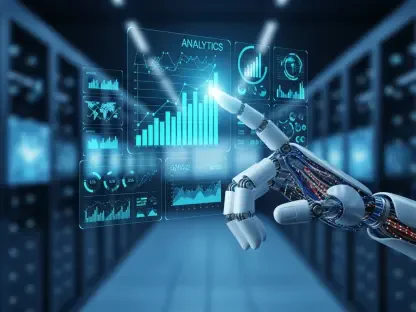In a rapidly evolving business environment, process automation has become a cornerstone of operational efficiency, yet many enterprises grapple with the constraints of traditional systems, which often fail to meet modern demands. Consider a scenario where a multinational corporation, despite heavy investment in automation, still faces bottlenecks in handling complex, cross-functional workflows, resulting in missed opportunities and stagnant productivity. These limitations highlight a critical gap in current technologies. This report delves into the transformative potential of agentic AI, an emerging technology poised to shatter these barriers by introducing autonomous, adaptive systems capable of redefining how businesses operate. By exploring the current state of automation, key trends, challenges, and future possibilities, this analysis aims to provide a comprehensive understanding of how agentic AI is set to reshape the automation landscape.
Understanding the Current State of Process Automation
The process automation industry has undergone significant transformation over recent decades, becoming integral to modern business operations across sectors like manufacturing, finance, and customer service. Enterprises rely on automation to streamline repetitive tasks, reduce operational costs, and enhance accuracy in high-volume processes. This shift has been driven by the need to remain competitive in a digital-first economy, where speed and efficiency are paramount.
Traditional tools, such as Robotic Process Automation (RPA), have played a pivotal role in this evolution, with major market players like UiPath, Automation Anywhere, and Blue Prism leading the charge. RPA excels at automating rule-based, structured tasks—think invoice processing or data entry—enabling organizations to achieve notable cost savings and error reduction. However, the scope of automation in enterprises often remains limited to isolated functions, leaving broader, more dynamic processes reliant on human intervention.
Despite these advancements, current systems face substantial technological limitations that hinder their ability to address complex challenges. Traditional automation struggles with unstructured data, exception handling, and workflows requiring contextual decision-making, often resulting in operational silos. These shortcomings create a pressing need for more sophisticated solutions that can bridge the gap between routine efficiency and strategic adaptability, setting the stage for innovative approaches to emerge.
The Rise of Agentic AI and Autonomous Agents
Key Trends and Technological Advancements
Agentic AI represents a groundbreaking shift in the automation paradigm, moving beyond rigid, rule-based systems to autonomous, goal-oriented technologies. Unlike conventional tools, agentic AI systems are designed to adapt, learn from environmental feedback, and make proactive decisions without constant human oversight. This capability positions them as intelligent collaborators, capable of managing intricate processes with a level of sophistication previously unattainable.
Current trends in this space include intelligent process orchestration, where AI autonomously coordinates multi-step workflows across systems, and integration with real-time data streams for dynamic responses. Additionally, the emphasis on proactive decision-making allows these systems to anticipate issues and act before they escalate, a stark contrast to the reactive nature of traditional automation. Such advancements address critical shortcomings, like the inability to handle exceptions or cross-functional tasks, opening doors to innovation in operational models.
The opportunities for agentic AI are vast, as it tackles inefficiencies that have long plagued automation efforts. By enabling systems to prioritize tasks strategically and maintain contextual memory, this technology ensures seamless execution even in unpredictable scenarios. As enterprises seek to optimize beyond basic efficiency, agentic AI emerges as a catalyst for reimagining how automation aligns with broader business objectives.
Market Growth and Future Projections
Adoption of agentic AI and autonomous agents is gaining momentum across industries, with sectors like healthcare, logistics, and retail leading the way in implementation. Recent industry reports indicate a sharp rise in pilot programs and full-scale deployments, driven by the promise of enhanced decision-making speed and operational agility. According to projections from Gartner, the market for autonomous AI solutions is expected to grow at a compound annual rate of over 25% from 2025 to 2027, reflecting robust demand.
Performance metrics further underscore this potential, with early adopters reporting up to 30% improvements in process efficiency and significant reductions in manual intervention, as noted in IBM studies. These figures highlight not only the scalability of agentic AI but also its capacity to deliver measurable returns on investment. The data suggests a trajectory of rapid expansion, particularly as integration with existing systems becomes more seamless.
Looking ahead, the influence of these technologies on competitive landscapes appears profound. Organizations leveraging agentic AI are likely to gain an edge through faster, data-driven responses and optimized resource allocation. As adoption scales, the ability to harness autonomous agents could redefine market leadership, pushing laggards to accelerate their digital transformation strategies to avoid falling behind.
Challenges in Adopting Agentic AI for Automation
The transition to agentic AI, while promising, is not without significant hurdles that organizations must navigate. Technological integration poses a primary challenge, as embedding autonomous systems into legacy infrastructures often requires extensive overhauls, leading to compatibility issues. Additionally, the high initial costs of deployment can deter smaller enterprises or those with constrained budgets from embracing this shift.
Beyond technical barriers, organizational resistance frequently complicates adoption efforts. Employees and stakeholders may harbor concerns about job displacement or the reliability of autonomous decision-making, creating cultural pushback. Moreover, risks such as data security vulnerabilities and the complexity of managing self-governing systems add layers of concern, particularly in industries handling sensitive information.
To address these obstacles, a phased approach to implementation can ease the transition, allowing gradual integration while minimizing disruption. Investing in stakeholder training ensures that teams are equipped to collaborate with AI systems, fostering acceptance and reducing fear. Establishing robust governance models is also critical, providing clear oversight and accountability to mitigate risks and build trust in autonomous operations.
Regulatory and Compliance Considerations
The deployment of agentic AI in automation is subject to a complex regulatory environment that organizations must carefully navigate. Data privacy laws, such as the General Data Protection Regulation (GDPR) in Europe and similar frameworks globally, impose strict requirements on how AI systems handle personal information. Ethical AI standards further demand that autonomous agents operate with fairness and without bias, a concern amplified by their decision-making autonomy.
Transparency and accountability stand as cornerstones of compliance in this context, particularly as these systems execute actions independently. Businesses must ensure that AI-driven processes are auditable and that decision rationales can be explained to regulators and stakeholders. Industry-specific guidelines, especially in sectors like finance and healthcare, add additional layers of scrutiny, requiring tailored approaches to implementation.
As regulatory landscapes evolve, their impact on adoption rates cannot be understated. Organizations must stay agile, aligning their AI strategies with emerging standards to avoid penalties or operational setbacks. Proactive engagement with policymakers and investment in compliance tools will be essential to balance innovation with adherence to legal and ethical mandates.
Future Outlook for Agentic AI in Process Automation
The long-term potential of agentic AI in process automation extends across diverse applications, promising to transform key business functions. In customer service, autonomous agents are expected to handle intricate issue resolution, delivering personalized experiences at scale. Similarly, in supply chain management, real-time adaptability to market fluctuations could redefine responsiveness and efficiency.
Emerging disruptors, such as advancements in machine learning algorithms and growing demand for tailored solutions, are likely to accelerate this evolution. Global economic shifts, including increasing labor costs and supply chain complexities, will further drive the need for autonomous systems that reduce dependency on manual processes. These factors collectively signal a future where agentic AI becomes indispensable to operational resilience.
Innovation and strategic adoption will play pivotal roles in shaping market dynamics, positioning agentic AI as a critical differentiator. Companies that invest in scalable architectures and foster a culture of adaptability stand to gain the most from this shift. Over time, the convergence of technological progress and business strategy will likely establish autonomous automation as a benchmark for industry excellence.
Conclusion and Strategic Recommendations
Reflecting on the insights gathered, it becomes evident that agentic AI holds immense promise in transcending the limitations of traditional automation, paving the way for unprecedented operational excellence. The journey toward integration reveals both transformative opportunities and intricate challenges that demand careful navigation by business leaders.
Moving forward, actionable steps emerge as vital for harnessing this potential. Business leaders are urged to prioritize talent development, ensuring teams are skilled in human-AI collaboration through targeted upskilling programs. Upgrading infrastructure to support real-time data processing and scalability stands as another critical focus, alongside the establishment of governance frameworks to maintain ethical and transparent AI operations. These steps, when executed with foresight, position organizations to not only adapt but thrive in an automation-driven future, securing lasting competitive advantage through early and strategic engagement.









